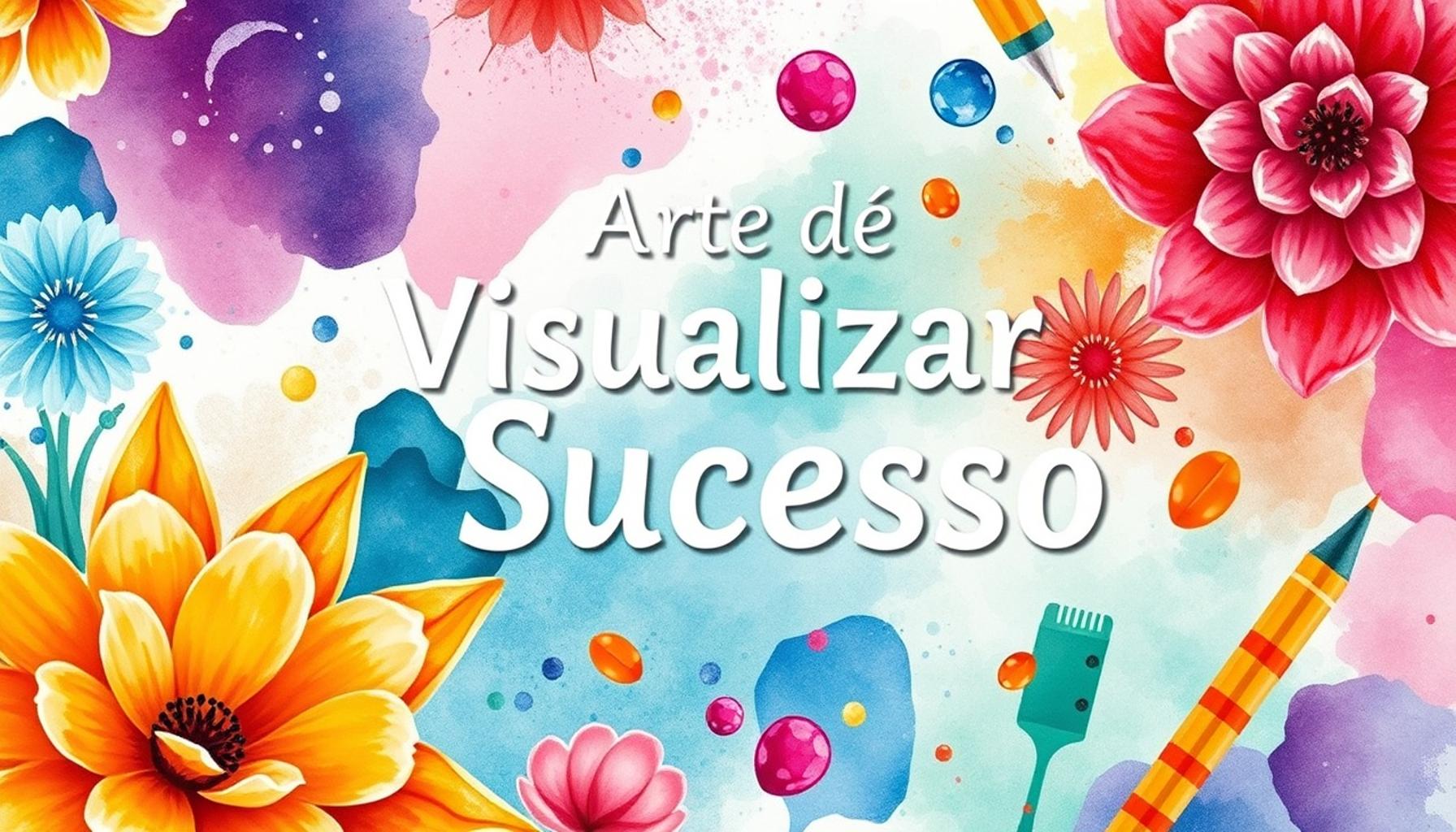The Importance of Visualizing Success in Overcoming Fears and Insecurities

Understanding Visualization as a Transformative Tool
In contemporary society, where uncertainties abound and ambitions often collide with harsh realities, many individuals struggle against the weight of their fears and insecurities. In Nigeria, these feelings can often be attributed to a myriad of factors, including societal expectations, economic stresses, and personal experiences. Amid this whirlwind of challenges, visualization stands out as a powerful strategy for combating negativity and nurturing a resilient self-image.
So, what does visualization entail? At its core, it involves a multifaceted approach that includes:
- Creating a mental image of success: This means vividly picturing your desired outcomes, such as landing a dream job or achieving a personal milestone.
- Engaging in positive affirmations: Regularly speaking affirmations that reinforce your self-worth and capabilities can significantly alter your mindset.
- Practicing mindfulness: This involves focusing your thoughts in the present moment, allowing for a clear and open mindset that supports positive thinking.
By integrating these elements, individuals can:
- Set clear goals: By ensuring these goals resonate with personal values, they become more meaningful and motivating.
- Overcome performance anxiety: Techniques like visualization can be particularly beneficial in high-pressure scenarios, such as public speaking or job interviews, where nerves often hinder performance.
- Cultivate resilience: Anticipating success allows individuals to prepare for positive outcomes, fostering an attitude that embraces challenges rather than shying away from them.
Nigerian urban centers such as Lagos and Abuja are rife with opportunities, yet they also present formidable competition. For many, the fear of not measuring up can be paralyzing. However, through the practice of visualizing success, this fear can be cleverly rechanneled into motivation, effectively transforming a barrier into a stepping stone. Whether gearing up for a competitive job interview, pitching a startup idea, or delivering a speech at a community event, leveraging the mind’s eye can significantly bridge the gap between unrealized potential and tangible achievement.
Let’s explore deeper into how visualization can effectively reshape individuals’ approaches towards their fears and insecurities. With practical examples and insights tailored to the Nigerian context, individuals are encouraged to harness this technique. Whether it’s through communal workshops, personal development seminars, or simple daily routines, visualization can empower anyone to shift their mindset, embrace their strengths, and achieve new heights, proving that mental imagery is not just a concept, but a pathway to success.
RECOMMENDED: Check out this similar article
The Mechanics of Visualization in Fostering Confidence
To fully appreciate the significance of visualizing success as a tool for overcoming fears and insecurities, it is essential to understand the science and psychology behind this transformative practice. Visualization operates on the premise that our brains cannot distinguish between real experiences and vividly imagined ones. When individuals create detailed mental scenarios of success, they essentially program their minds to perceive these outcomes as attainable realities.
Research indicates that visualization stimulates the same brain regions as actual practice. For instance, a study published in the Journal of Experimental Psychology found that individuals who visualized exercising in conjunction with physical workouts showed significant improvements over those who strictly relied on physical training alone. This insight unveils why visualization is not merely a whimsical exercise; instead, it becomes a foundational aspect of mental preparation.
For individuals grappling with fears and insecurities, such as the prevalent issue of performance anxiety in Nigeria, engaging in visualization can provide substantial relief. By regularly envisioning themselves succeeding in high-pressure situations—whether it be delivering a compelling lecture or pitching an innovative idea—individuals can reduce the psychological barriers that hinder effective performance. The key is to immerse oneself fully by incorporating various sensory details, such as the sounds of applause or the texture of a presentation folder, which enhances the realism of the experience in their mind.
- Enhancing Self-Confidence: Visualizing one’s success ends up acting like a rehearsal, wherein individual strengths and strategies are emphasized, boosting overall confidence.
- Creating Positive Associations: Regular visualization reinforces the notion that success is not only possible but also a probable outcome, thus creating a positive feedback loop.
- Clarifying Goals: Visualization helps in clearly defining objectives, leading to better focus and commitment when pursuing them in real-life scenarios.
In Nigerian contexts, where the competition can be fierce in bustling cities, harnessing the power of visualization could be the differentiating factor between success and failure. It is not uncommon for individuals to feel overwhelmed by societal pressures—magnified in a rapidly urbanizing environment where expectations can be unrealistic. However, reframing these narratives through visualization encourages a shift in perspective, helping individuals see not only their capabilities but also the roadmap to achieving their dreams.
Practical applications of visualization can vary widely. They may include personal journaling sessions dedicated to crafting detailed success narratives, engaging in guided visualization exercises during meditation, or participating in community workshops aimed at goal-setting through mental imagery. Each of these methods contributes to building a strong, confident mindset that navigates the turbulent waters of fear and insecurity with ease.
Visualizing success is a powerful tool that can transform the way individuals approach their fears and insecurities. When we engage in visualization techniques, we create mental images of our goals and the steps necessary to achieve them. This process not only enhances motivation but also increases self-confidence. By picturing ourselves succeeding, we effectively prepare our minds for the actual experience, making it less daunting.Research has shown that visualization can stimulate the same neural pathways in our brains as real-life experiences. For instance, athletes frequently visualize their performance before competing, which has been found to improve their skills and mental readiness. This principle also applies to everyday challenges, whether they involve public speaking, job interviews, or even personal relationships. The act of visualization enables us to confront our insecurities in a controlled and positive way, ultimately leading to greater resilience against fear.Moreover, visualization allows individuals to reframe their thought patterns. Instead of focusing on potential failure or embarrassment, they can deliberately shift their attention to the possibilities of success. This alteration in mindset transforms fears from barriers into hurdles that can be overcome with determination and practice. By regularly practicing visualization exercises, individuals can greatly diminish the hold that fears and insecurities may have on their lives, replacing them with a strong sense of purpose and clarity.As we explore the importance of visualizing success further, it’s essential to consider how these techniques can be integrated into daily routines. Simple practices like meditation, vision boards, or guided imagery can serve as effective methods to cultivate a vision of success. In doing so, we not only pave our paths toward achieving our goals but also foster a mindset that sees challenges as opportunities for growth.
SEE ALSO: Click here to read another article
Real-World Examples: Visualization as a Catalyst for Change
The power of visualization transcends theory and finds expression in real-world success stories across various fields. In Nigeria, where numerous individuals face societal and economic challenges, harnessing visualization techniques can lead to remarkable transformations. The sports arena provides some compelling examples. Athletes such as Nigerian track star Blessing Okagbare often emphasize the importance of mental preparation, stating that picturing oneself on the winner’s podium fuels their ambition and determination. This mental rehearsal not only builds confidence but prepares them to tackle the pressures of competition head-on.
Beyond sports, the business landscape in Nigeria is ripe with opportunities for applying visualization strategies. Entrepreneurs, particularly those in the ever-evolving tech sector, benefit immensely from envisioning their success. For instance, successful startups like Andela and Paystack didn’t merely thrive from hard work and innovation; their founders engaged in strategic visualization. By imagining the potential positive impact of their ventures, as well as the pathways to reach their goals, they cultivated a sense of purpose and resilience.
Consider the importance of storytelling in Nigerian culture; many entrepreneurs can narrate their path to success as if it’s a vivid tale of conquest, employing rich imagery that reflects their aspirations. This not only speaks to their journey but also serves as motivation for others. In this way, visualization becomes a communal tool—empowering individuals not only to uplift themselves but to inspire collective progress.
- Improving Mental Health: Visualization does not only assist in achieving external goals; it can also play a significant role in mental well-being. Individuals wrestling with anxiety or self-doubt can experience a substantial reduction in their fears through visualization techniques, effectively retraining their brains to respond differently in challenging situations.
- Enhancing Emotional Resilience: Regular visualization cultivates a robust emotional framework. By routinely envisioning overcoming obstacles, individuals build a mental reservoir to draw from in moments of actual challenge.
- Empowering Others: Visualization can be harnessed in group settings, such as community workshops focused on personal development. By sharing success stories and visualization techniques, participants can motivate each other to surmount personal barriers while reinforcing a culture of empowerment.
Additionally, experts often recommend integrating visualization into daily routines. For instance, starting each day with a few minutes dedicated to visualizing one’s goals can set a positive tone for the day. In the context of Nigeria, where the hustle and bustle of life can be overwhelming, finding calm moments to imagine success can provide a sense of direction and purpose amidst chaos.
Moreover, the advent of technology has made visualization more accessible than ever. Mobile apps focusing on meditation and mindfulness often incorporate guided visualization techniques, making it easier for individuals to practice regularly. For example, platforms like Insight Timer or Headspace allow users to engage in visualization practices tailored to their specific needs, whether it’s preparing for a job interview or tackling a challenging presentation.
In summation, the application of visualization is boundless, not just among the elite or the famous but among everyday individuals who aspire to rise above their fears and insecurities. It serves as a powerful reminder that envisioning success is the first step towards achieving it, particularly in a dynamic country like Nigeria, where courage and innovation are essential for personal growth and societal advancement.
LEARN MORE: This related article may interest you
Conclusion: Visualizing Success as a Transformative Tool
In an ever-changing landscape like Nigeria, the ability to visualize success has emerged as a crucial ally in overcoming fears and insecurities. The compelling examples of athletes and entrepreneurs illustrate that visualization is not merely a theoretical concept but a practical tool for achieving real outcomes. By mentally picturing their goals, individuals can foster the confidence needed to confront life’s challenges head-on.
Furthermore, the benefits of visualization extend into mental health, enabling individuals to cope with anxiety and self-doubt through retraining their thought processes. As emotional resilience builds with each visualization exercise, individuals develop a robust framework to tackle adversity. This ongoing practice also creates a supportive community atmosphere where shared stories of success inspire collective progress.
As we progress into a more technology-driven age, accessing visualization resources has become easier. With mobile apps that provide guided visualizations tailored to personal needs, there has never been a more exciting time to integrate this powerful technique into daily routines.
Ultimately, visualizing success is a transformative journey—a journey that requires dedication and belief in one’s potential. By embracing this process, every individual can find the courage to rise above fears and insecurities, not just for personal gain, but also to uplift those around them, catalyzing positive change within their communities. As we continually strive for growth and innovation, visualizing success stands as a beacon of hope and possibility for a brighter future.



